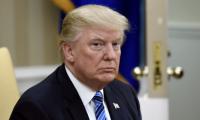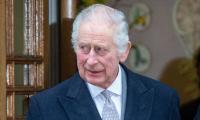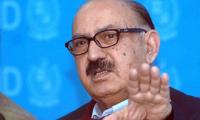Analysis
The newly announced budget for 2017-18, which is a blend of taxation and relief measures, will have wide-ranging impact on the people and various sections of the economy. It has set its sight on the promotion of economic growth and expansion of social safety net.
Announcing the budget on the floor of the National Assembly on Friday, Finance Minister Ishaq Dar unveiled incentives for agriculture, industry, small and medium enterprises and information technology. The budget lays particular emphasis on the development of infrastructure, and energy. These are the vital areas for the speedy growth of the economy. The target for economic growth has been set at six percent which seems well within reach.
The underlying spirit of the budget appears to improve the overall environment for doing business in Pakistan. Clearly an attempt has also been made to provide relief to the people, especially the under-privileged sections of the society. Pay and pensions of government employees have been substantially increased. The minimum wage has also been increased.
In order to bridge the gap between income and expenditure, a comprehensive package of taxation measures forms an important part of the budget.
The changes announced in income tax, sales tax, customs and excise duty seem to have been made with a view to increasing national production and discouraging conspicuous and frivolous consumption. The incentives for agriculture and industry point out in this direction. So is the increase in taxes on cigarettes, chewing betel and cosmetics.
This is the fifth budget of the present government and the finance minister dilated at length upon the economic performance of the government during its tenure. He gave out facts and figures about where the economy stood in 2013 and where it is now. The comparison shows the improvement but it is also true that structural reforms need to be further deepened to reach the desired goals.
A heavy debt burden continues to persist. In the new financial year, the debt-servicing will consume Rs1,363 billion. External receipts are estimated at Rs511 billion and bank borrowing at Rs390 billion. It has been claimed that the government has stopped borrowing for current expenditure and the resources raised through borrowing are now spent only for development projects. This has led to a substantial increase in development spending of the government which is estimated over one trillion for next year.
With provincial share of development expenditure, there is reason to believe that new job opportunities will be created and social sectors like health and education vastly improved. This also shows there is no dearth of money but firm action on the full and timely implementation of such programmes remains critical.
Yet another area of concern is a wide trade deficit as imports have been high and exports rather low. The budget makes an attempt to deal with this issue through fiscal policy by which inessential imports should be discouraged. There are wide-ranging provisions to accelerate exports. The growth potential of exports is well established and it is hoped that the newly announced incentives will help in this regard.
The people expect that prices of essential items remain stable. Though inflation rate in the last a few years has remained low but looking in the backdrop of minimum wage level, there is compelling need to keep a watchful eye on price levels.
The budget has been presented and will soon be open for debate in the National Assembly. The finance minister has talked about a broad consensus on basic economic fundamentals. It is, therefore, reasonable to expect that all the elected members will vigorously participate in the budget debate.
Justice Tariq Mehmood Jahangiri took up Sher Afzal bail plea for hearing
CCP’s announcement made, stating that applicants are required to pay money upfront in order to enroll
According to details, the police took a van filled with female students of medical college to a police station on...
In this image, the logo of the Nowshera Press Club can be seen. — Facebook/Nowshera Press Club/FileNOWSHERA: The...
Senator Sherry Rehman said the PPP had previously extended an offer to the PTI to form a government, but the PTI is...
A division bench comprising Justice Shakeel Ahmad and Justice Dr Khurshid Iqbal heard the petition filed by the KP...







